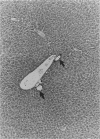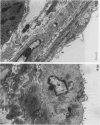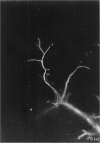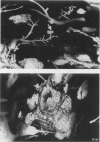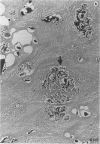Abstract
The cpk mutation in mice produces a lethal recessive form of polycystic kidney disease (PKD) that, like human forms of the condition, is associated with an age-related incidence of hepatic cysts. Injection of plastic into the biliary tree of affected animals revealed that these cysts arise from focal dilatations of the epithelial lining that may enlarge to the point that they obstruct the bile ducts. This concept was supported by histological and scanning and electron microscopic studies. No evidence could be found of primary obstruction of the biliary tree. The same techniques were then employed in specimens of human liver from patients with both recessive (ARPKD) and dominantly inherited PKD (ADPKD). Similar abnormalities of the biliary tree were identified. These abnormalities were not found in control liver samples from patients without PKD. The liver of the patient with ADPKD also demonstrated many von Meyenburg complexes. These were related to some cyst development, but these complexes freely communicated with bile ducts, contrary to currently held opinion. We conclude that hepatic abnormalities in the cpk mouse and human PKD arise from changes in bile ducts that are analogous to the renal lesions.
Full text
PDF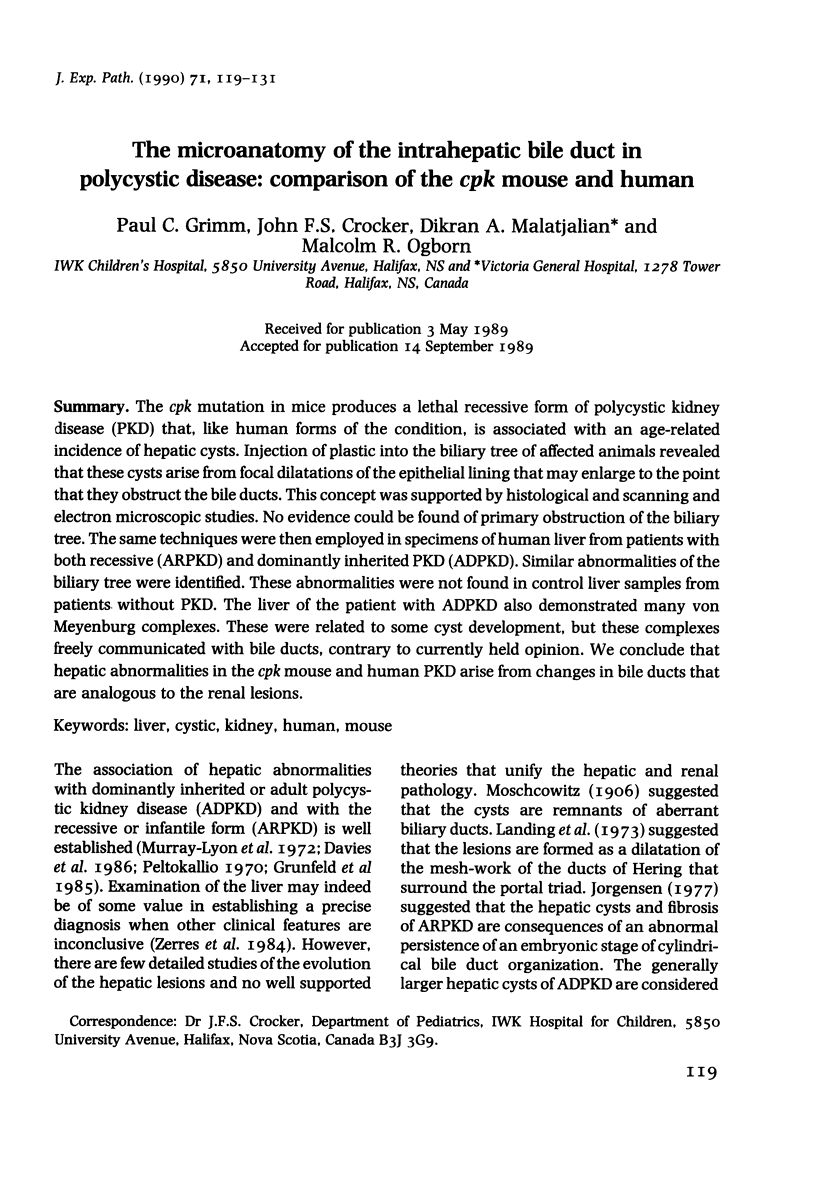
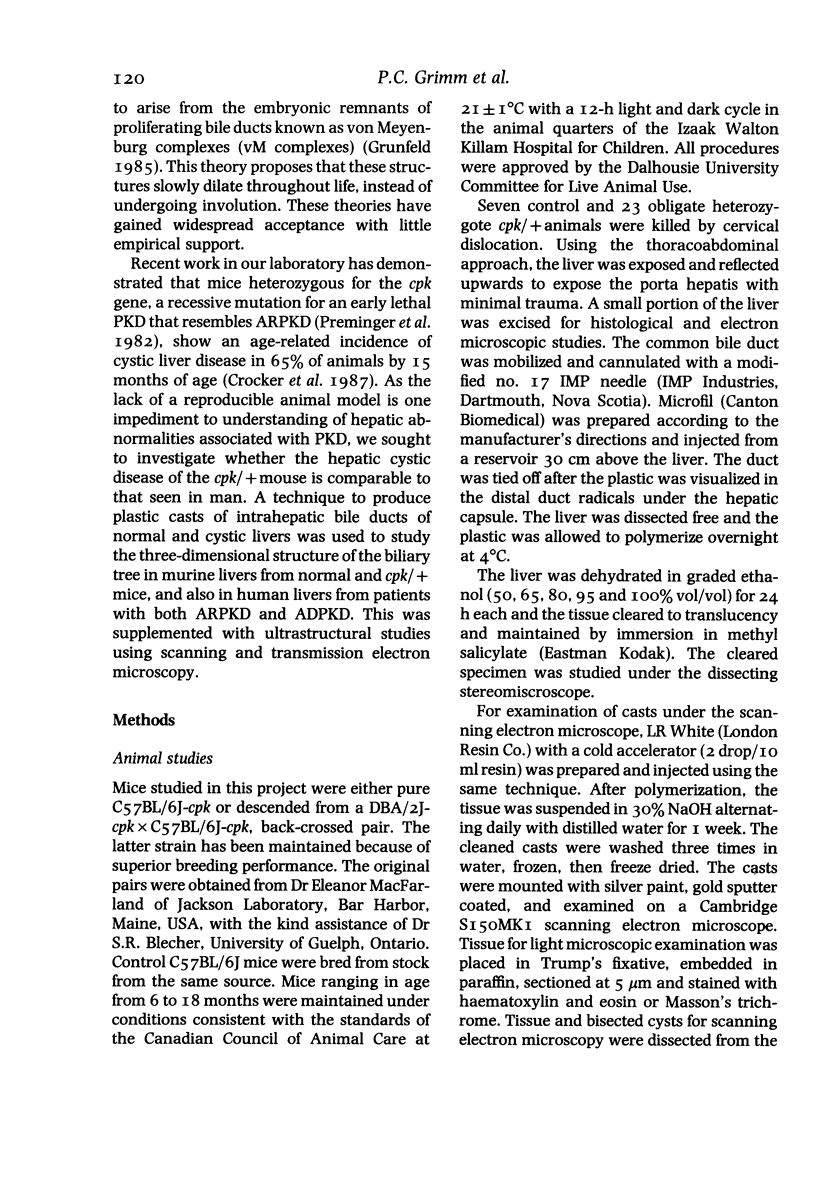
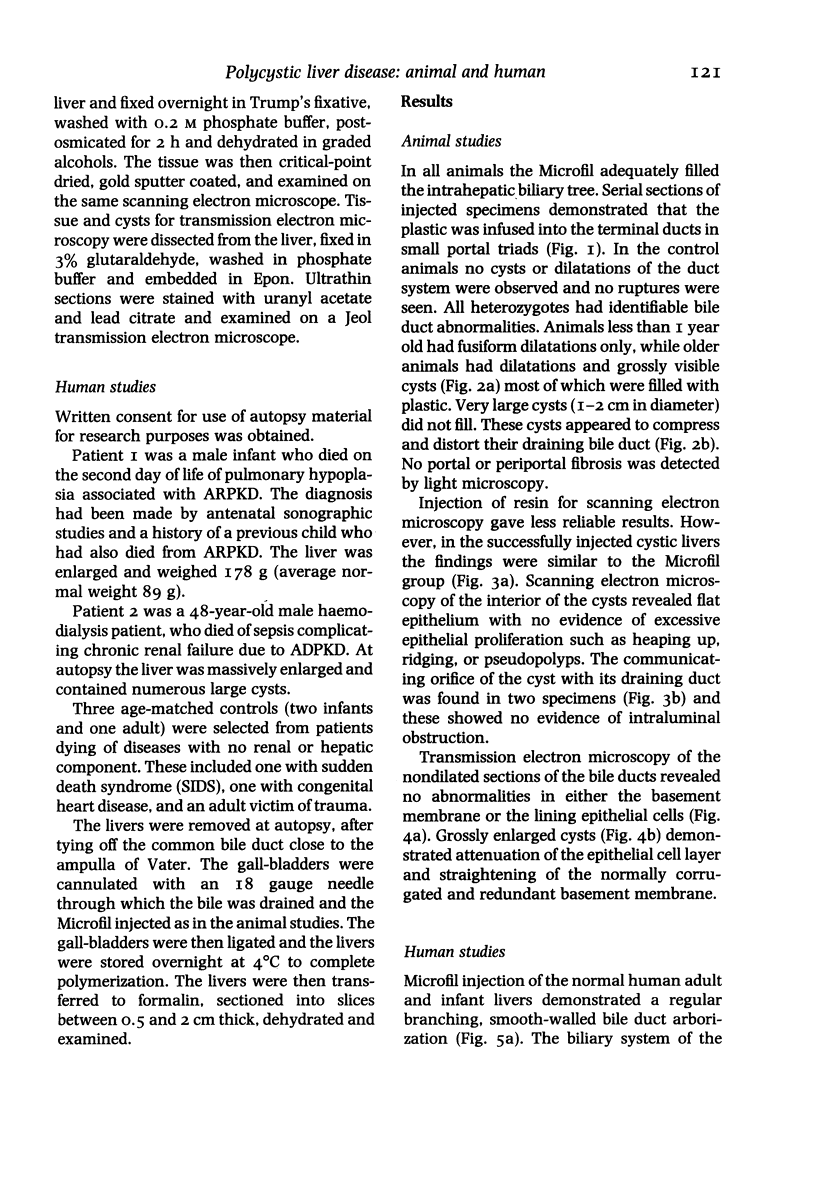

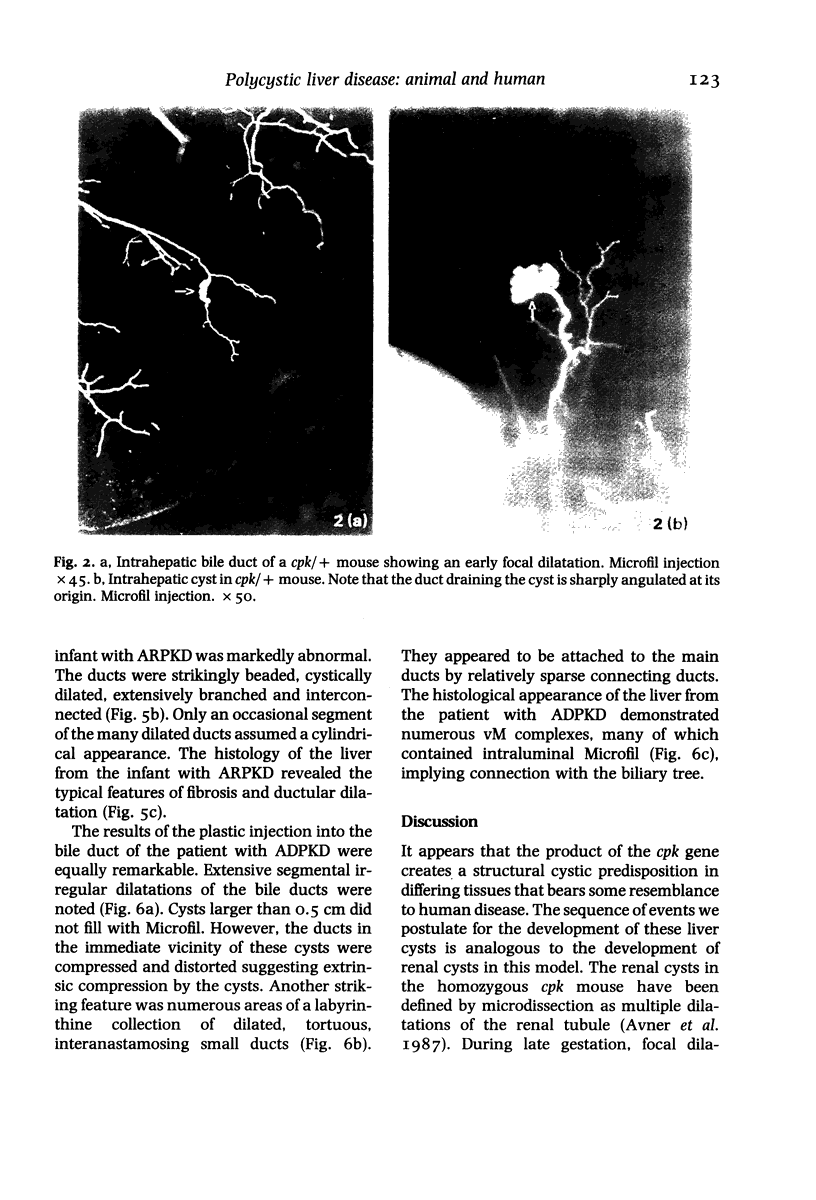

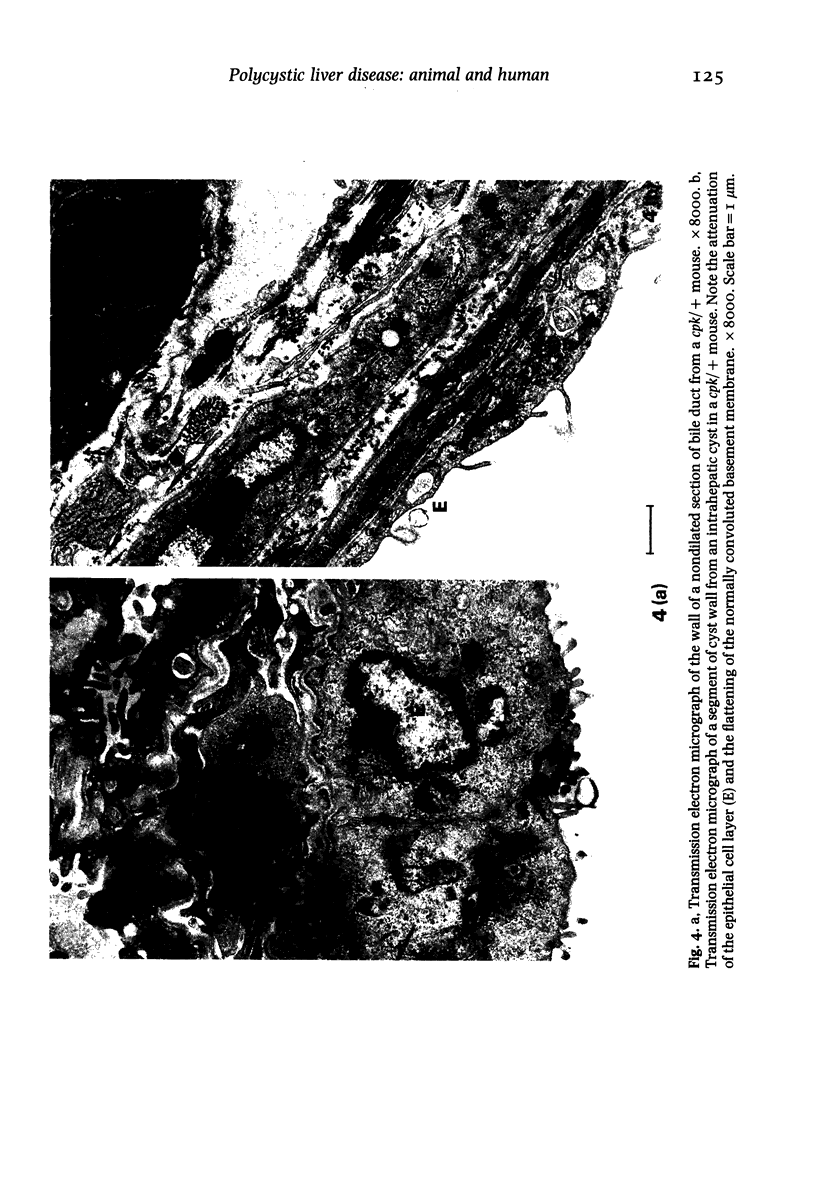
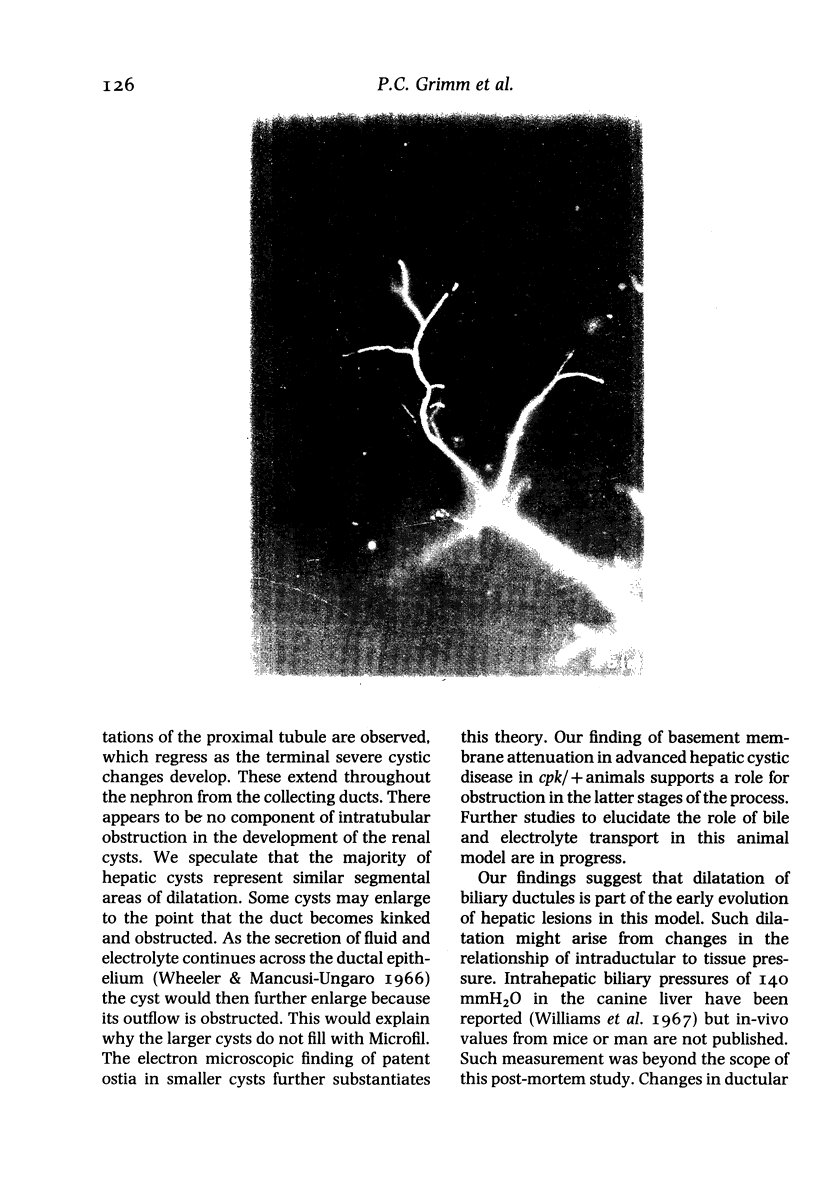
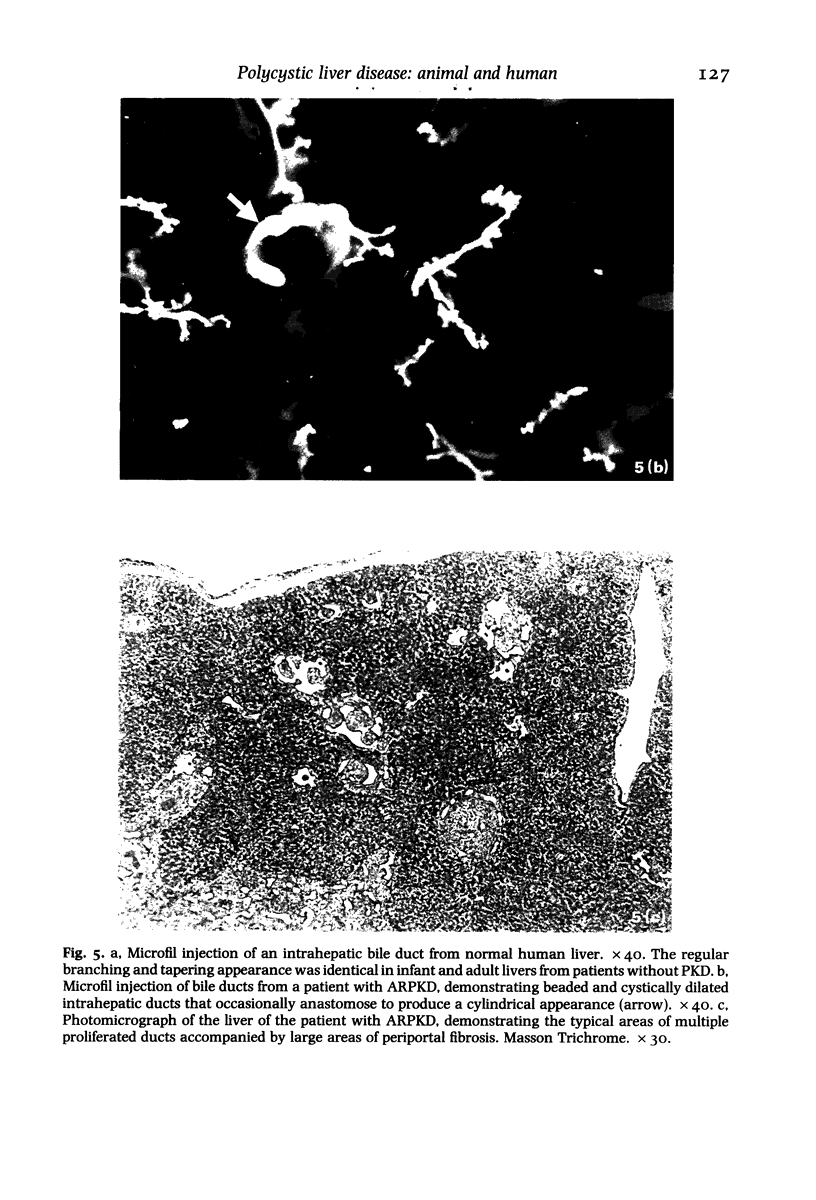
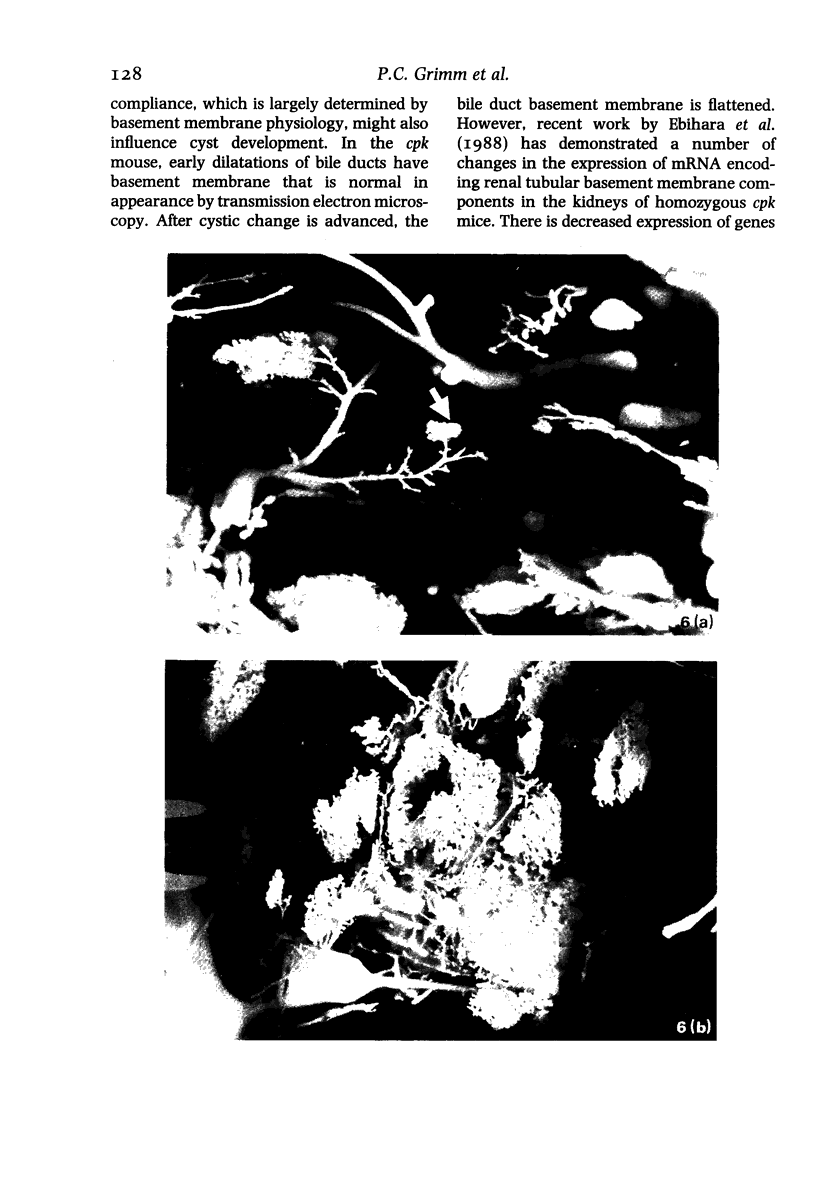

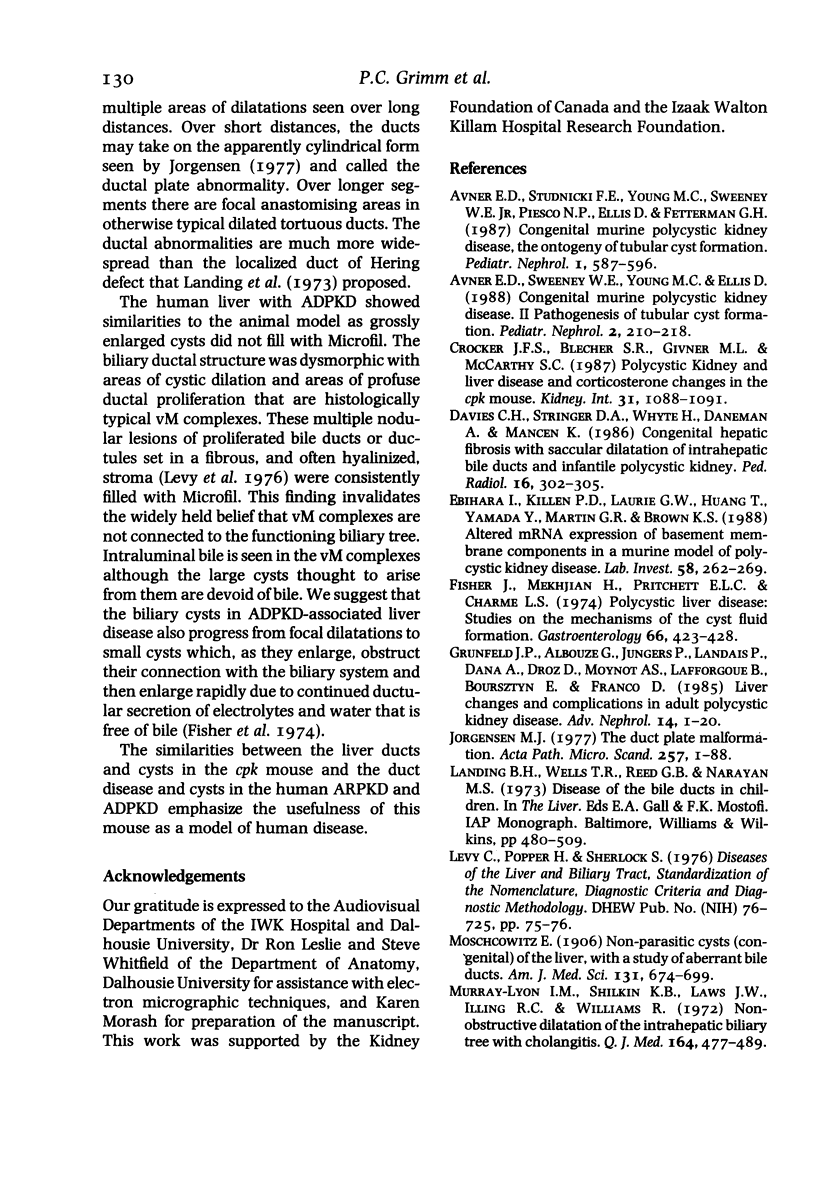
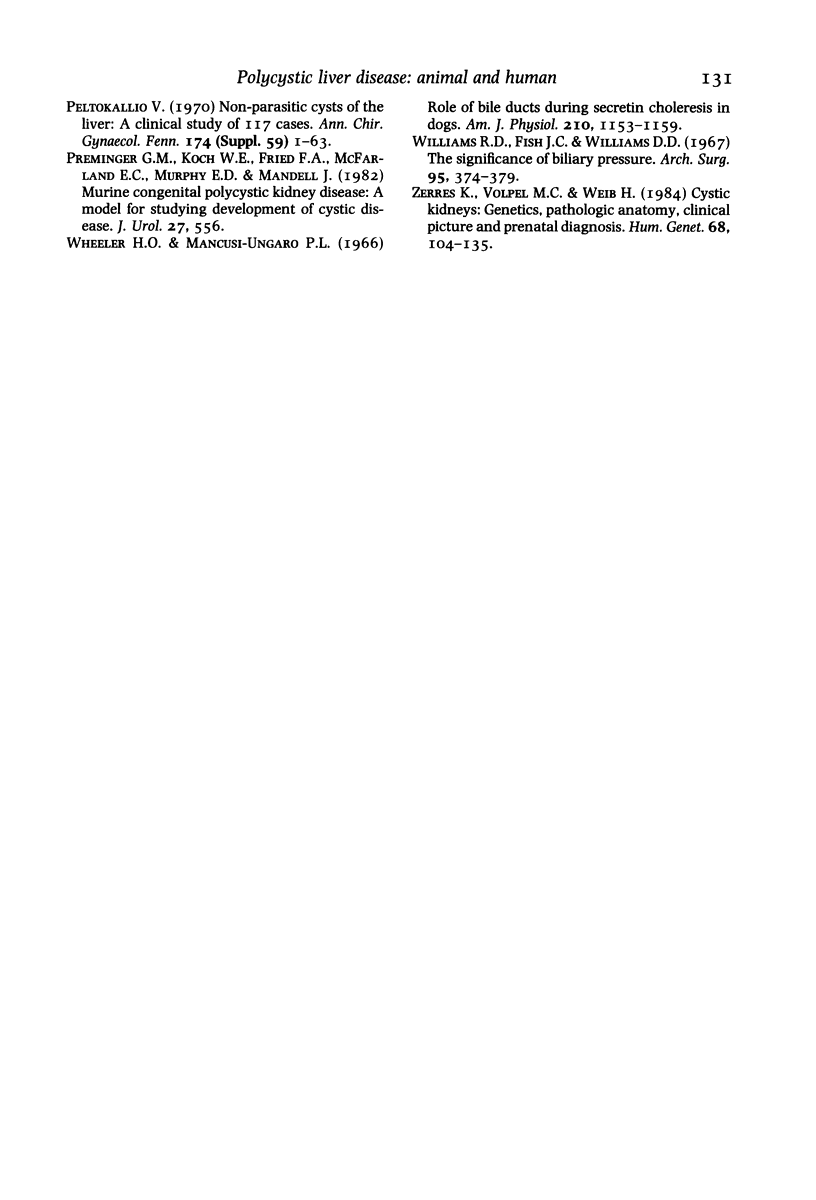
Images in this article
Selected References
These references are in PubMed. This may not be the complete list of references from this article.
- Avner E. D., Studnicki F. E., Young M. C., Sweeney W. E., Jr, Piesco N. P., Ellis D., Fettermann G. H. Congenital murine polycystic kidney disease. I. The ontogeny of tubular cyst formation. Pediatr Nephrol. 1987 Oct;1(4):587–596. doi: 10.1007/BF00853593. [DOI] [PubMed] [Google Scholar]
- Avner E. D., Sweeney W. E., Jr, Young M. C., Ellis D. Congenital murine polycystic kidney disease. II. Pathogenesis of tubular cyst formation. Pediatr Nephrol. 1988 Apr;2(2):210–218. doi: 10.1007/BF00862593. [DOI] [PubMed] [Google Scholar]
- Crocker J. F., Blecher S. R., Givner M. L., McCarthy S. C. Polycystic kidney and liver disease and corticosterone changes in the cpk mouse. Kidney Int. 1987 May;31(5):1088–1091. doi: 10.1038/ki.1987.112. [DOI] [PubMed] [Google Scholar]
- Ebihara I., Killen P. D., Laurie G. W., Huang T., Yamada Y., Martin G. R., Brown K. S. Altered mRNA expression of basement membrane components in a murine model of polycystic kidney disease. Lab Invest. 1988 Mar;58(3):262–269. [PubMed] [Google Scholar]
- Fisher J., Mekhjian H., Pritchett E. L., Charme L. S. Polycystic liver disease: studies on the mechanisms of cyst fluid formation. A case report. Gastroenterology. 1974 Mar;66(3):423–428. [PubMed] [Google Scholar]
- Grünfeld J. P., Albouze G., Jungers P., Landais P., Dana A., Droz D., Moynot A., Lafforgue B., Boursztyn E., Franco D. Liver changes and complications in adult polycystic kidney disease. Adv Nephrol Necker Hosp. 1985;14:1–20. [PubMed] [Google Scholar]
- Murray-Lyon I. M., Shilkin K. B., Laws J. W., Illing R. C., Williams R. Non-obstructive dilatation of the intrahepatic biliary tree with cholangitis. Q J Med. 1972 Oct;41(164):477–489. [PubMed] [Google Scholar]
- Wheeler H. O., Mancusi-Ungaro P. L. Role of bile ducts during secretin choleresis in dogs. Am J Physiol. 1966 May;210(5):1153–1159. doi: 10.1152/ajplegacy.1966.210.5.1153. [DOI] [PubMed] [Google Scholar]
- Williams R. D., Fish J. C., Williams D. D. The significance of biliary pressure. Arch Surg. 1967 Sep;95(3):374–379. doi: 10.1001/archsurg.1967.01330150050008. [DOI] [PubMed] [Google Scholar]
- Zerres K., Völpel M. C., Weiss H. Cystic kidneys. Genetics, pathologic anatomy, clinical picture, and prenatal diagnosis. Hum Genet. 1984;68(2):104–135. doi: 10.1007/BF00279301. [DOI] [PubMed] [Google Scholar]



